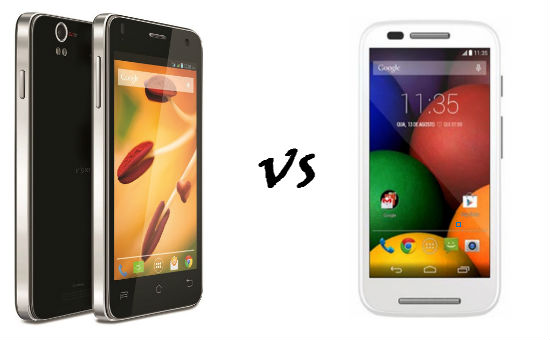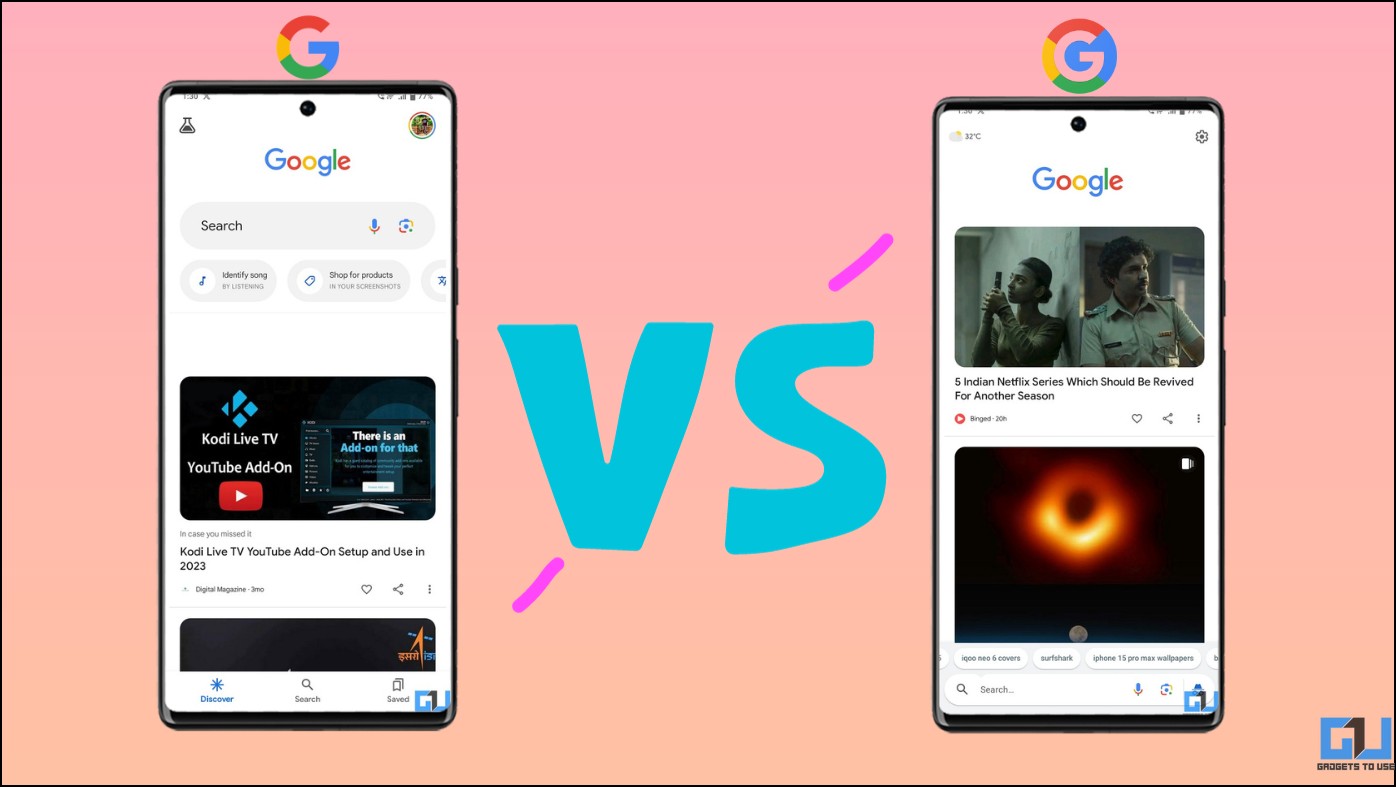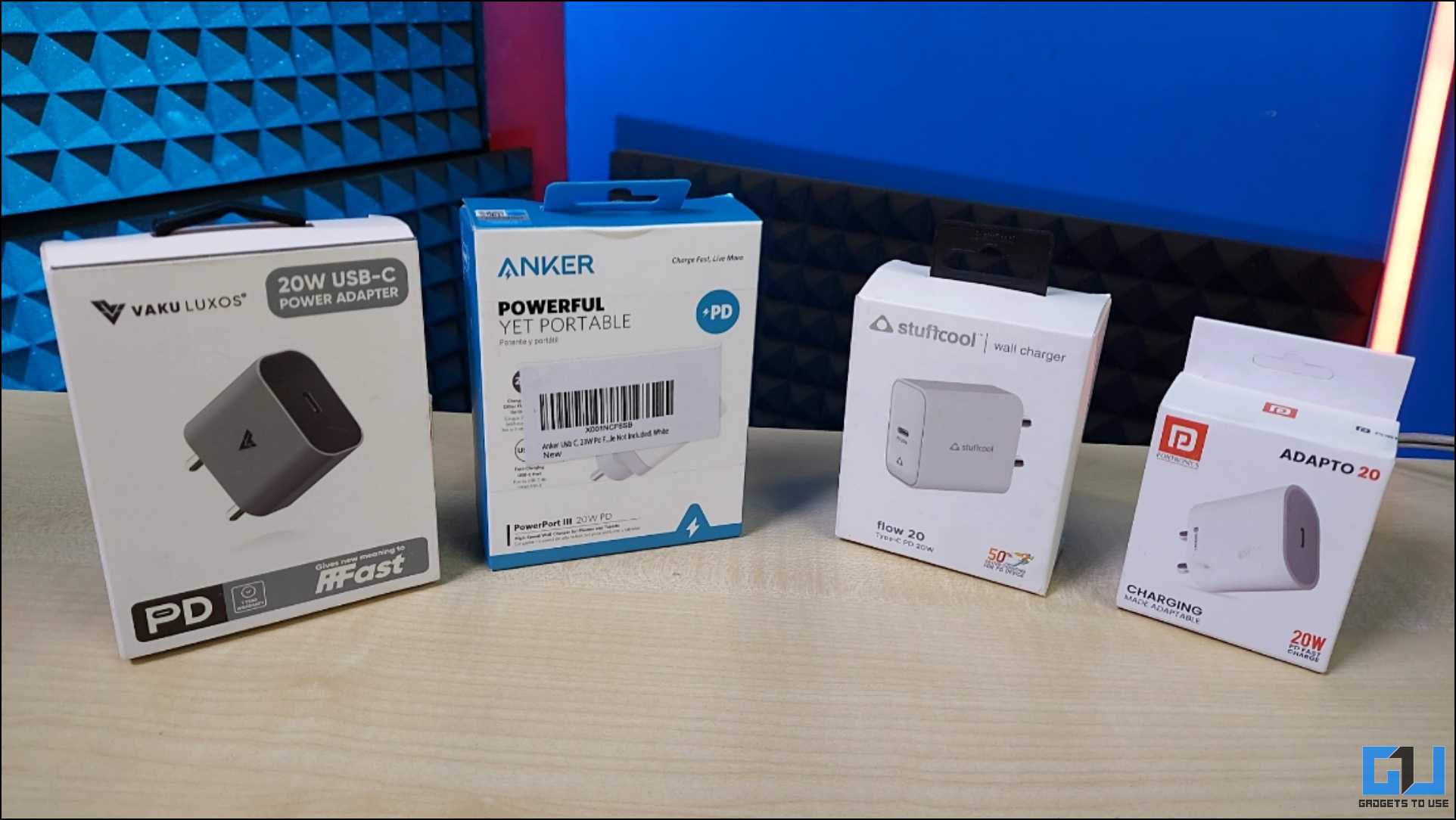Moto E was launched in India for Rs 6,999 in the entry-level price market segment to grab a large chunk of the market share that is highly dominated by the price conscious consumer base. Obviously, this has compelled the local vendors to announce competent smartphones in the same price bracket with solid specs. One such offering that has been launched into the market is the Lava Iris X1 with a well crafted design and a price tag of Rs 7,999. Now, let us analyze the capabilities and the differences between these phones.
Display and Processor
The Lava Iris X1 boasts of a 4.5 inch IPS display that carries a FWVGA screen resolution of 854×480 pixels translating to a pixel density of 217 pixels per inch. On the other hand, the Moto E features a relatively smaller 4.3 inch packing a qHD resolution of 960×540 pixels that makes it a good one in the entry-level segment with a moderate pixel density of 256 pixels per inch. While the Lava offering has a IPS panel that delivers amazing viewing angles, the Moto E display is layered with Corning Gorilla Glass 3 coating for added protection against scratches and damage.
Under the hood of the Moto E is a 1.2 GHz dual-core Qualcomm Snapdragon 200 processor that is teamed up with 1 GB of RAM to take care of the multi-tasking segment. In comparison, the Lava Iris X1 is launched in collaboration with Broadcom housing a Broadcom BCM23550 quad core chipset and Videocare IV GPU and 1 GB of RAM to handle the multi-tasking department. Though the Moto E comes with fewer cores than the Lava Iris X1, the handset’s performance is quite smooth for day to day tasks.
Camera and Internal Storage
In terms of camera functionality, the Lava Iris X1 features an average 8 MP main camera that is teamed up with exceptional features such as auto focus, dual LED flash, HDR, Burst mode, FHD 1080p video recording and BSI+ sensor. Also onboard is a 2 MP front-facer that helps in making video calls and capturing good quality selfies.
On the other hand, the Moto E is highly criticized for the lack of a front-facer, LED flash on its primary camera and poor camera capabilities. The handset has compromised on its photography capabilities to cut down its cost and features a 5 MP primary camera that can capture only mediocre quality snaps and videos.
The default storage space in both the smartphones is only 4 GB, but it can be expanded externally up to 32 GB with the help of a micro SD card. Obviously, the 4 GB haters should find an issue in this regard, but the presence of expandable card slot in the handsets resolves this issue.
Battery and Features
The Lava offering bows down a bit in terms of battery as the handset packs a lower 1,800 mAh battery whose backup is still not known. In comparison, the Moto E is fueled by a 1,980 mAh battery that is claimed to deliver a day’s backup under moderate usage. Moreover, the Lava offering boasts a larger display that will consumer higher power than the Motorola offering making it a falter in this segment.
Both the Moto E and Lava Irix X1 are fueled by Android 4.4.2 KitKat operating system and we can expect them to receive timely updates in future. While the Lava phone includes support for OTG support and dual MIC for active noise cancellation, the Moto E comes with customizable back covers that can be interchanged as per the users’ desires.
Key Specs
| Model | Lava Iris X1 | Moto E |
| Display | 4.5 inch, 480×854 | 4.3 inch, 960×540 |
| Processor | 1.2 GHz Quad Core | 1.2 GHz Dual Core |
| RAM | 1 GB | 1 GB |
| Internal Storage | 4 GB, Expandable up to 32 GB | 4 GB, Expandable up to 32 GB |
| OS | Android 4.4.2 KitKat | Android 4.4.2 KitKat |
| Camera | 8 MP/ 2 MP | 5 MP/ VGA |
| Battery | 1,800 mAh | 1,980 mAh |
| Price | Rs 7,999 | Rs 6,999 |
Price and Conclusion
From the pricing aspect, both the devices will be competition with each other, but they possess completely different specs. The display is a main aspect that makes the Moto E top the shelf with greater clarity than the one in the Lava Iris X1. On the other hand, the inclusion of quad-core processor and a front-facing shooter and main camera with the LED flash are favorable additions to the Lava offering. Furthermore, the latter arrives with a free Intelligent Flip case and 16 GB of micro SD card.
As the success of the older Motorola offerings such as Moto X and Moto G are well known, the same is believed to re-occur with the Moto E.



